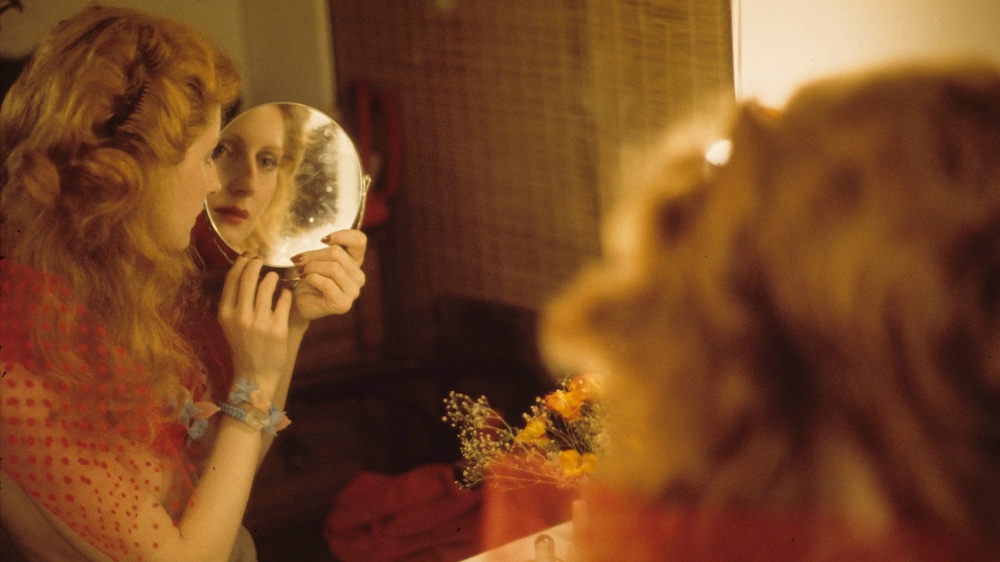A 2020 headline stopped Nicole Newnham, the Berkeley documentary director of The Rape of Europa and the Oscar-nominated Crip Camp, cold. The obituary read: “Shere Hite: She explained how women orgasm and she was hated for it.”
“I saw that picture of her and I’d never really encountered her persona,” Newnham tells 48hills. “I remembered that austere, beautiful cover design of The Hite Report, that was seared in my brain. I was just amazed by the idea of someone who had done something so fundamentally liberatory and powerful and good, and being so outcast for doing so. And I thought, given everything that’s going on in this crazy time we’re living in, Shere’s story was a shockingly relevant story.”
Newnham retrieves Hite from the mists of history and restores her reputation in her latest documentary The Disappearance of Shere Hite, opening in Bay Area theaters on Fri/1. Culling together archival material and new interviews with people familiar with both the woman and her work, a picture emerges of a pioneer in female sexuality (who would also do a report on male sexuality), whose research upended the patriarchal status quo. The Hite Report on Female Sexuality was a bestseller that made its author a literary sensation. But in her later career, she was forced to contend with increased hostility, shockingly depicted in Newnham’s film.

The filmmaker recalls first encountering The Hite Report as an adolescent, finding a copy of the book in her mother’s bedside chest in an area where she hid things she didn’t want her daughter to see. (“The most interesting place to look!” Newnham laughs.)
“It was probably a boring, rainy day in Oregon. I found the book and I will never forget it, because we were hunting and pecking for little shreds of intel about what sex and women’s lives were really like in that era. Maybe a little Judy Blume here, a little Anne Frank there, little references to sex in a novel or magazine. But all of a sudden here it was. It was like opening the tomb and all the riches were inside it.”
The Hite Report on Female Sexuality was published in 1976. In that analog era when typewriters, snail mail, and landlines counted as modern technology, Hite’s research was laborious, based on an intricate questionnaires that her subjects completed—some with written responses and others recorded onto tapes—and mailed back to her. The material now resides in a Harvard archive that Newnham accessed.
“I heard audio cassette tapes that some people sent in and I could hear women responding to Shere’s questions, almost kind of whispering to her and I could hear the husbands rooting around in the background,” Newnham says. “And I would think about how people were motivated to find hours and hours to sit there and do that. Obviously, you could say, like these guys on the talk shows (who appeared with Hite) did, ‘What kind of weird person would want to do that?’ Or you could say, ‘Oh, my god, people really have a need to share these things.’ And that’s why so many books were sold, because people needed to talk about those things and connect around them.”
From her research into her subject and her talks with Hite’s collaborators and friends, a picture emerged of a woman only too aware of not only how women’s sexuality and feelings, but even their clothing and self-presentation, were often trivialized by society. When it came to publishing the book, Hite and her editor Regina Ryan wanted it to be read as news and science, a mission that is reflected even in its plain cover. Hite wanted her work to be accepted on the same level as that of Alfred Kinsey and Masters and Johnson.
Hite was a young woman in the 1960s. She worked as a model. She was living in New York City as the sexual revolution of the era unfolded around her. These things influenced the path her life would take, Newnham believes.
“Her feeling was that it was not a revolution, and pretty exploitative of women,” the filmmaker says. “You know, she’s thinking, ‘Okay, well, if you’re going to say we’re going to open things up and make them free, how can we do that in a way that was manifested with real equality?’ She saw that a lot of the cultural ideas of free love, etc. was just a license for men to objectify and exploit women further.”
The Hite Report on Female Sexuality made Hite a media star in the 1970s, when the women’s liberation movement was a burgeoning force and the Equal Rights Amendment seemed viable. By the time, she published her third book, Women and Love: A Cultural Revolution in Progress, it was 1987, the ERA had never been ratified, and the reactionary Reagan Revolution was in full force. Hite was made a pariah, her research attacked and shown contempt in her TV appearances. She was hounded out of the country, eventually renouncing her U.S. citizenship after immigrating to Germany to live with her concert pianist husband Friedrich Höricke. Three years after Hite’s death, Newnham hopes her film will help restore Hite’s reputation and bring her back into the cultural conversation, where her work remains relevant.
“I would hope that she starts being taught again,” Newnham says. “There’s this kind of ceaseless cycle of progress in feminism and then the backlash against it and silencing people. Then we have to do it again. All of that is something we wanted to highlight, but I find a lot of inspiration and hope in Shere’s story, too.
“Shere actually did change society; she actually did. She didn’t get rid of the misogyny, obviously, and we’re still suffering from the intensity of the backlash that was brewing and targeting her… I think it’s an important exercise to step back and reckon with stories like this and how iconoclastic people with powerful ideas get silenced.”
THE DISAPPEARANCE OF SHERE HITE opens in Bay Area theaters Fri/1.





